Carnivorous Sarracenia Trumpet Pitcher Farnhamii
Carnivorous plants definitely fall into the category of weird, wonderful and downright fascinating. Mesmerising houseplant owners of all ages with their striking appearances and fascinating adaptations to capture and feed on insects and small creatures. It is no wonder they have held their popularity for decades.
Sarracenia, commonly known as a Trumpet Pitcher plant is a natural fungus gnat killer! If you have an issue with this pest this plant is for you.
The best place to start with carnivorous plants is by understanding their natural habitat and how their environment has led them to form such unique adaptations. Carnivorous plants have been on the planet for a long time, around forty million years and have been found on almost every continent and tropical island with Antarctica being the only exception.
Carnivorous plants are typically found in areas that are high in natural light and moisture, as well as water-logged areas like swamps where the nutrients in the soil are virtually non-existent. Many of their strange adaptations have been formed from this lack of nutrients.
All plants need basic nutrients to survive and without them, they don’t stand much of a chance.
Nitrogen and phosphorus are two of the most important nutrients plants need, nitrogen is the main component in chlorophyll which plants use for photosynthesis. The other is phosphorus, which is needed to make this process possible. Plants use phosphorus to take in, store and convert the sun’s rays. Without it, they would be unable to use the sun’s energy to create the biomolecules (proteins, amino acids, DNA) they need to grow and reproduce.
Carnivorous plants have adapted over millions of years to get these essential nutrients from their environment. Unable to get these nutrients from the soil they have formed traps to capture insects and small creatures that are rich in the nutrients they lack.
There are approximately 600 different species that fall into the Carnivorous plant category. These different species have found ways of attracting, trapping, killing, and absorbing their prey purely to extract the nutrients they need for survival.
Most carnivorous plants will use bright colours, distinctive smells, and sticky surfaces to attract insects but there are some key mechanisms that make up the variations of carnivorous plants and most species can be spread across these different hunting strategies
- Snap traps use rapid leaf movement to snap shut and capture their prey.
- Bladder traps suck in their prey with a small internal vacuum.
- Pitfall traps entice prey into a small rolled-up leaf with digestive enzymes.
- Flypaper traps utilize sticky mucus to trap their prey.
- Eel traps use inward-facing hairs to force their prey towards the digestive organ.
Click here to check our care instructions to find out how to look after your carnivorous plant.
Would you like to learn about carnivorous plants? Check our article here.
Pet Friendly
- How should I care for my Trumpet Pitcher plant to ensure it thrives?
- Place your plant in a location with full to medium light and maintain a moist environment, mimicking its natural swampy habitat. Use rainwater or distilled water for watering, as tap water may contain minerals that can harm the plant.
- Is the Sarracenia Trumpet Pitcher suitable for beginners?
- Yes, this plant is considered easy to care for and is a great choice for beginners. It requires minimal feeding, as it obtains nutrients from captured insects, making it a low-maintenance option for new plant owners.
- Can this plant be kept in a terrarium environment?
- Yes, the Trumpet Pitcher can thrive in a terrarium setting, which helps maintain the high humidity levels it loves. Ensure the terrarium is well-lit and has adequate space for the plant’s height and growth.
☀️ Light
☀️☀️▫️ (Medium)
The Sarracenia Trumpet Pitcher Farnhamii thrives in medium to high light conditions. It prefers bright, indirect sunlight but can tolerate some direct sun, especially in the cooler parts of the day. Position it near a window where it can bask in plenty of light but avoid intense afternoon sun that can scorch its leaves.
💧 Water
💧💧💧 (High)
This carnivorous plant loves moisture! Keep the soil consistently damp but not waterlogged. Use rainwater or distilled water for best results, as tap water can contain minerals that might build up and harm the plant. During the growing season, ensure the water tray beneath the pot is always filled.
🌡️ Temperature
🌡️🌡️▫️ (Average)
Sarracenia thrives in average home temperatures, ideally between 15-25°C. It can tolerate lower temperatures during its dormant winter period, but protect it from frost.
💦 Humidity
💦💦▫️ (Moderate)
While this plant enjoys humidity, it doesn’t require the high levels some tropical plants might. A moderate humidity level is sufficient. If your home is very dry, consider a small humidifier or a pebble tray to increase moisture around the plant.
🪴 Repotting
Sarracenia generally needs repotting every 2-3 years or when it outgrows its pot. Use a peat-based soil mix, specifically designed for carnivorous plants, to ensure proper drainage and acidity. Spring is the best time for repotting to give your plant a fresh start for the growing season.
🐾 Pet Friendliness
This plant is pet-friendly! No worries if your furry friends get a little curious.
✅🪴 Recommended Locations at Home
Consider placing your Sarracenia in well-lit kitchens, sunrooms, or near east or south-facing windows. These spots typically provide the bright conditions it loves without too much direct sunlight.
🌬️🪴 Air Purifying
While primarily known for its insect-trapping abilities, the Sarracenia also contributes to air purification by absorbing pollutants around it.
✨ Other Plant Features
Aside from its striking appearance and pet-friendly nature, the Sarracenia is an effective natural solution to reduce the number of fungus gnats in your home. Its unique trapping mechanism is not only fascinating but also quite beneficial in maintaining a healthier plant environment.
If you have any more questions about caring for your new plant, feel free to ask Mossbot for tips and advice! You can also reach out to us through our website. Remember, we offer a free plant hospital service if your Sarracenia ever needs a bit of extra help.
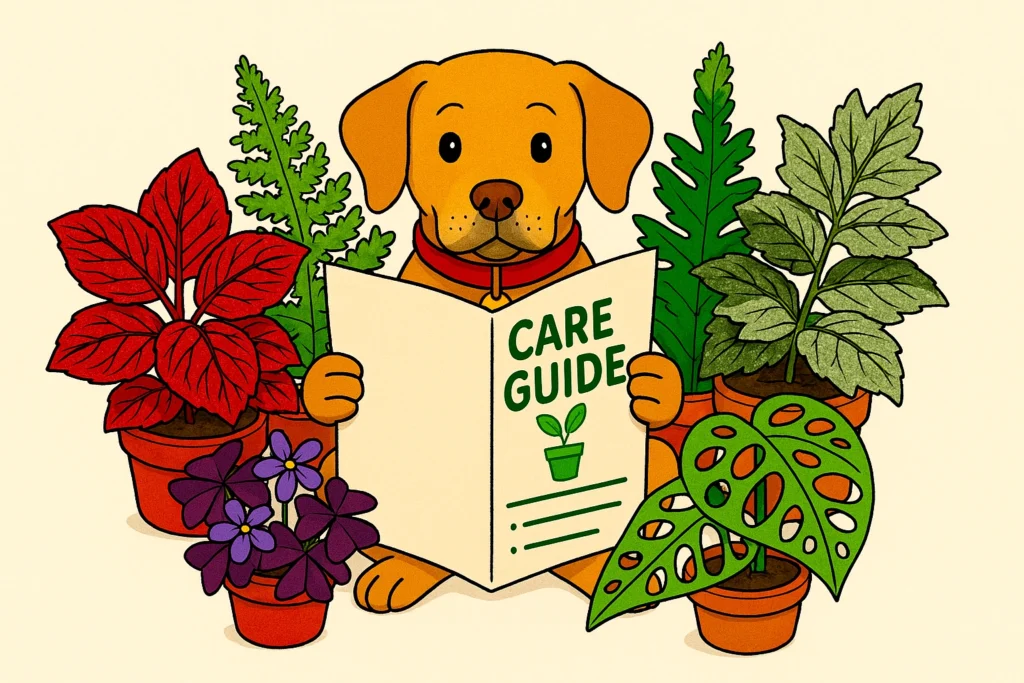
Free Care Guide With Every Purchase
Scan the plant pot QR for instant access to our care guide for your plant. No hassle, no stress, just healthy and happy plants.
2 reviews for Carnivorous Sarracenia Trumpet Pitcher Farnhamii
| 5 star | 100% | |
| 4 star | 0% | |
| 3 star | 0% | |
| 2 star | 0% | |
| 1 star | 0% |
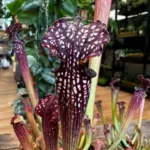 Carnivorous Sarracenia Trumpet Pitcher Farnhamii
Carnivorous Sarracenia Trumpet Pitcher Farnhamii


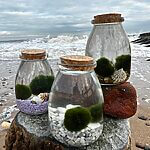
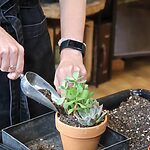
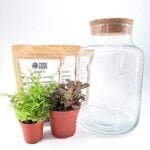
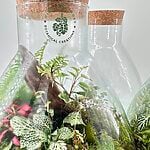
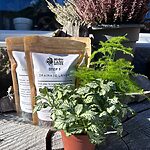
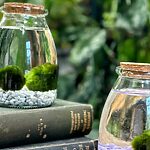
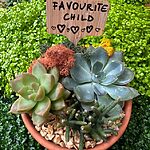
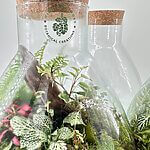


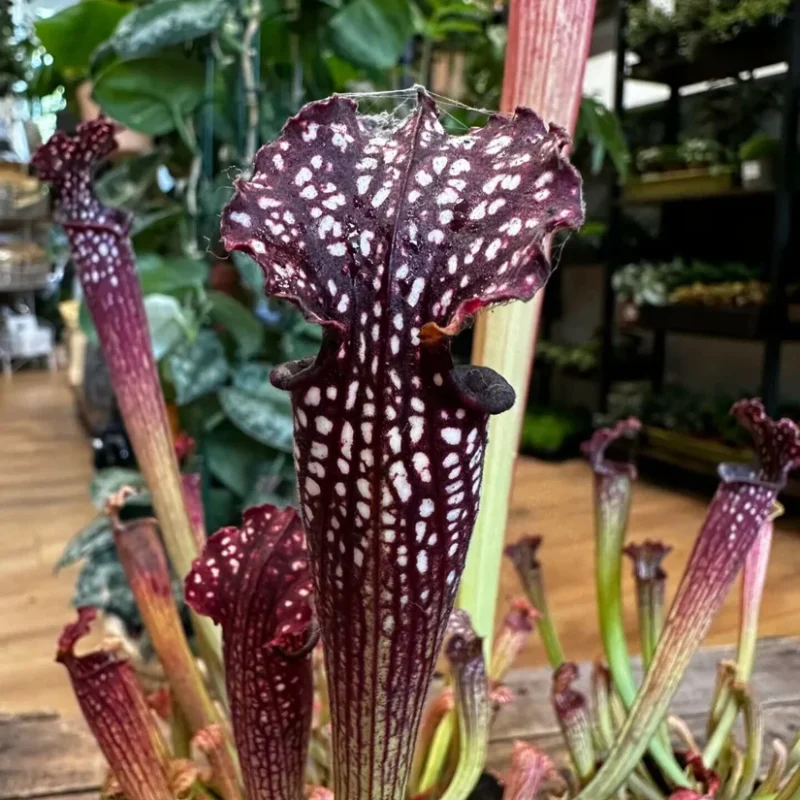






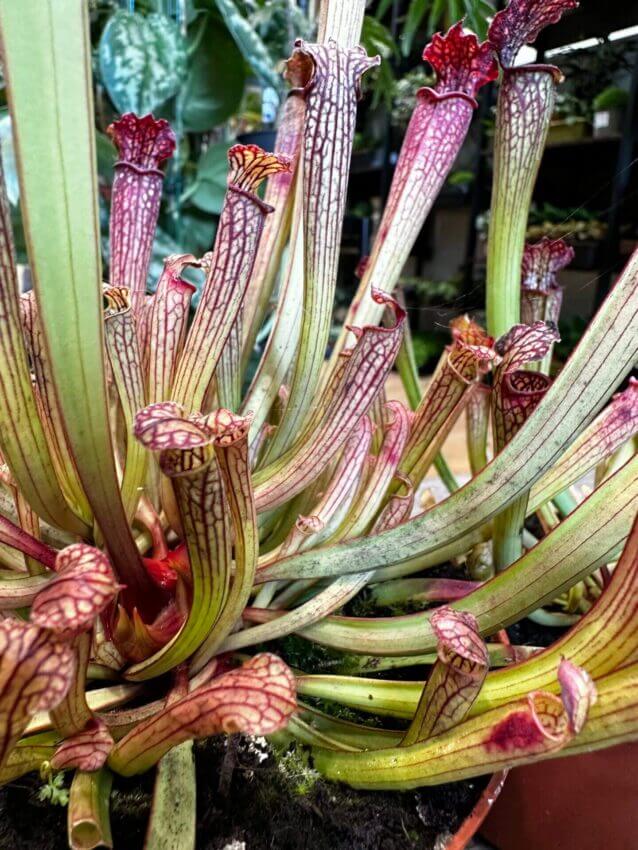
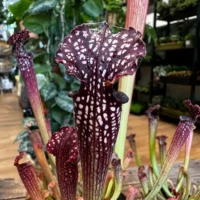
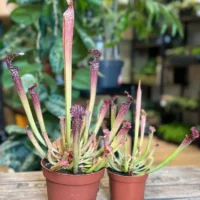
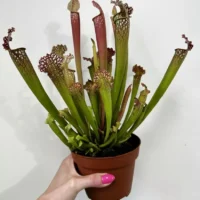
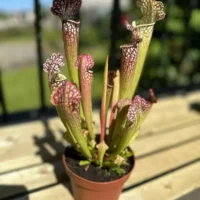
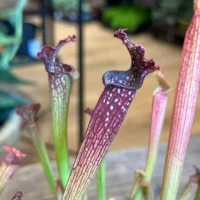
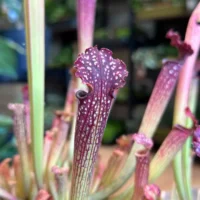
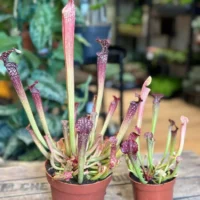
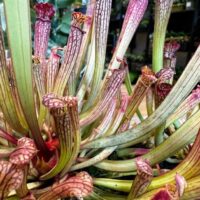
Great plant